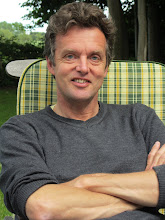THE POLISH AIR DISASTER
Last Saturday's plane crash in a Russian forest was a tragedy, both in human terms and for Poland as a country. A generation of political, military and civil service leaders were wiped out at a stroke.
Yet, as Poles begin to squabble about the proposal to bury ex-President Lech Kaczynski in Krakow's Wavel Cathedral, a place normally reserved for Poland's kings and national heroes, questions remain. Why, when there was such thick fog, did the pilot try again and again - the plane crashed on the fourth attempted landing - to land at Smolensk airbase instead of diverting to better airports at either Minsk or Moscow, as recommended by air traffic controllers? Why did Poland still use a 20-year old Soviet-era Tupolev-154 as its Presidential plane, when Russian aircraft technology has such a dodgy reputation and there are plenty of Boeing's or Airbus'es around? And why did the Government allow so many senior people to fly together on one plane, instead of splitting them up and thereby reducing the very risk which has now materialised?
The purpose of the flight was a visit to commemorate the 70th anniversary of the massacre in 1940 of 22,000 Polish officers by the Soviet secret police in the Katyn Forest, near Smolensk. These officers had been captured by the Red Army after it moved into Eastern Poland under the terms of its agreement with Nazi Germany, after the latter had invaded Poland in September 1939. When the Germans later invaded the Soviet Union, they found the mass graves and publicised the massacre. The Russians in turn blamed the Germans, got Polish medical experts to "confirm" that the Germans had done it when they passed back through Katyn on the way to Berlin, and even forced the post-war Polish Government to back the story. For 50 years they maintained this charade, until in 1990 Mikhail Gorbachev finally admitted responsibility.
Last week I watched Andrzej Wajda's film Katyn on television. It is clear from the film that the whole of Polish postwar society was polarised by the massacre, either accepting the official version of what had happened, or rebelling against it (as best they could). In many ways, it is still the defining issue in Poland today.
Which leads to the last question. The Polish Prime Minister, Donald Tusk, attended a joint commemoration with Russia's Vladimir Putin at the Katyn cemetery three days before the crash. Mr Putin's invitation was unprecedented, and had been widely seen as heralding a new era in relations between Poland and Russia. Why then did President Kaczynski wish to have a separate, Polish-only commemoration; and why did he see the need to drag so many high-ranking Poles along with him? Since there were no survivors of the crash, I suspect that we will never really know.
Walter Blotscher
Wednesday, 14 April 2010
Subscribe to:
Post Comments (Atom)

No comments:
Post a Comment